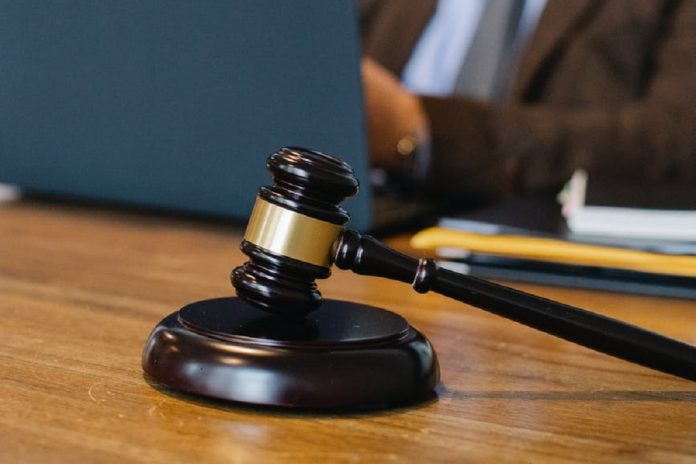by Sinead Morgan, Senior Associate, Employment Law Team at RDJ LLP
Gender Pay Gap Reporting
Companies who have successfully addressed their gender pay gap have highlighted factors which can drive the gender pay gap within an organisation. These include occupational segregation, unconscious bias and childcare arrangements. Commentators have also accepted that there are internal and external factors driving the gender pay gap. By their nature internal factors should be within the control of the employer whereas external factors may be more difficult to influence. One of the key indicators impacting on the gender pay gap would appear to be unconscious bias within the workplace. When Irish companies are required to publish their first gender pay gap reports in December 2022 it is likely that this will be cited as one of the factors driving gender pay gaps within certain organisations.
Unconscious Bias
An unconscious bias is a prejudice in favour of a person or group compared to another person or group which is implicit. It is entirely normal for an individual to hold unconscious beliefs about various social or identity groups without being aware of those biases. Individuals are often unaware of their biases making these issues difficult to address.
Unconscious bias can take many forms such as an affinity bias, confirmation bias, conformity bias or gender bias. An affinity bias occurs when a person feels a connection with another person due to similarities they hold. A confirmation bias arises when one makes assumptions about others based on their own beliefs and biases. Conformity bias arises when someone adopts their behaviour to conform to a group. Gender bias simply occurs when a person is treated differently based on their gender identity or gender expression.
Legislating for unconscious bias
The Employment Equality Acts 1998 – 2005 prohibits discrimination against employees on the following grounds: gender, civil status, family status, sexual orientation, religion, age, disability, race and membership of the Traveller community. Discrimination is defined as less favourable treatment. Such discrimination can be direct or indirect or imputed. Equality legislation by its nature addresses unfavourable treatment or behaviour. However, it does not address the issue of implicit beliefs held by individuals which may create that behaviour, either intentionally or unintentionally. If unconscious bias exists in an organisation and dictates its policies, it can impact on all aspects of that organisation from recruitment to promotion and termination and can undermine that organisation’s culture and objectives.
Caselaw
Unfortunately, there has been relatively limited discussion of unconscious bias in employment caselaw to date. For the most part this topic has been raised in the context of equality claims. It is noteworthy that unconscious bias was raised as far back as 2011 in the case of St Andrew’s College Dublin V MacCaba Coigligh and MacGearailt EDA 1313/2013 where the Labour Court indicated that the decision of the promotions board not to conduct interviews gave rise to lack of transparency and “ increased the scope for unconscious bias on the age grounds to influence its decisions”. Although the Labour Court found in favour of the employer, they recommended that all members of interview board should be trained on the requirements of the Equality Acts and be provided with techniques to identify and eliminate “personal, cultural and societal bias” that could cause discrimination.
Unconscious bias was again referenced in the case of Eileen Owens v Guinness Storehouse Ltd ADJ – 00014909/2018. In that case the Claimant alleged discrimination on the grounds of age within an interview process. In that case a member of the interview panel asked the candidate how she would settle into this ”young” workplace. The employer’s defence to the allegation of discrimination was that both members of the interview panel had completed unconscious bias and/or interview skills training. Ultimately, the Adjudicator found that ‘whether conscious or unconscious this question indicates that age was a factor in selection process, with a bias towards younger candidates’ and found in favour of the Claimant.
In a number of more recent cases the employer was in a position to dispute claims of unconscious bias by presenting clear evidence in relation to its policies and the application of those policies by interview panels. In the case of A Higher Executive v A Government Department ADJ – 00025703/2020 the Claimant alleged discrimination by reason of age within an internal promotion process. She argued that many of her older colleagues saw no point in applying for promotion as the Department ‘does not want to invest in older staff’. The employer gave evidence that members of the interview panel completed anti-discrimination training and attended refresher training before the interviews commenced. All candidates were provided with identical material to prepare for the interview. The candidate application form did not address the issue of age and the interview board did not know the age of the candidates. In order to be successful, candidates had to score 50 in each category and achieve an overall score of 360. The Claimant’s overall score was 340. Robust evidence was provided at hearing by the Chairman of the interview board who described her background and experience of training in stereotyping and dealing with conscious and unconscious bias. The Adjudicator accepted that in every organisation there was a graded structure or hierarchy which meant that fewer people populate the more senior grades, and that disgruntlement could arise amongst long serving staff who aspired to move upwards but failed to do so. However they did not accept that this meant that this organisation was biased against longer serving staff.
In the case of Desmond Furlong v Department of Transport ADJ – 00025061/2022 the Claimant alleged discrimination on grounds of age and gender in the shortlisting of applicants in a promotion competition in the civil service. The Claimant failed to reach the shortlist and appealed the decision by way of a Section 7 informal review. The informal review was carried out by the Department Personnel Officer who confirmed that decision. The Claimant alleged that there was a policy to positively discriminate in favour of women, which was applied in the selection process. This was denied by the employer. The employer also denied any bias in the process. Again, clear coherent evidence was provided by the Department Personnel Officer who confirmed that she was especially careful in internal competitions that applications be judged on the applications alone. She indicated that “unconscious bias was part of being human” and had advised the panel to guard against bias. In their decision the Adjudicator recognised that unconscious bias could occur and stated that “discrimination is rarely overt” and may “not be intentional, for example in the operation of a stereotype”. However, based on the robust evidence provided by the interview panel they found in favour of the employer.
The discussions of unconscious bias in these cases have highlighted the following issues:
- Actions arising from conscious or unconscious bias can result in discrimination occurring.
- There is no requirement under equality legislation for discriminatory behaviour to be intentional.
- Companies can guard against unconscious bias within an interview process by taking the following steps: providing unconscious bias training to the panel/ensuring a balanced panel is appointed/using a clear method of assessment such as point scoring, which can be used to justify the decision/treating all applicants equally within the process (to include strict adherence to interview questions) and removing demographics from CVs or application forms.
Moving away from a culture of unconscious bias
Unconscious bias can impact on all aspects of an organisation’s decision-making process. If a chain of bias is not broken it is likely to endure. There has been significant discussion around identifying and removing bias within the workplace from both an inclusivity and gender pay gap perspective. Research has suggested strategies that may assist in identifying and reducing bias in the workplace as follows:
Awareness
Many companies have introduced unconscious bias training and diversity training to improve awareness and change behaviour. This training serves to raise awareness within the workplace at all levels in relation to the biases that may exist. Responsibility then lies with the individual to address their behaviour and make more appropriate choices. Training alone is unlikely to resolve the issue of unconscious bias but is a common starting point for organisations in this journey.
Recruitment process
It has been suggested that unconscious bias could be removed from the hiring process by removing gendered wording from advertisements, advertising through new channels to attract more diverse candidates, using standardising interviews and scorecards, identifying objective criteria based on skills, removal of identifying features from CVs and ensuring interview panels are balanced, diverse and appropriately trained.
Policies
An organisation’s policies are intended to reflect their culture and objectives. In order for any real organisational change to occur businesses would need to review those policies. Organisations should remove gendered wording from their policies and consider whether certain policies are unduly favourable or unfavourable to certain groups. It is likely that the gender pay gap reporting will highlight areas where improvements can be made once reporting commences.
Promotion gaps
A promotion gap occurs when one group of people is promoted to senior positions more often than another. It is likely that gender pay gap reporting will identify promotion gaps in certain organisations. This would allow employers to set specific targets in areas where they are failing to achieve gender balance. Research suggests that leadership, development training and mentoring or coaching programs targeting specific groups or the provision of role models for those groups can improve employee engagement and reduce those gaps.
Learning points
Employees are by their very nature, human. For that reason, organisations must accept that unconscious bias is likely to exist. The goal of businesses is to identify those biases and to reduce their impact on decision-making. Although the gender pay gap reporting will impose a significant administrative burden on employers, research suggests that it can be used as a positive tool to identify such biases and take positive actions on foot of data gathered in order to align behaviour with company culture.
Article first appeared on Industrial Relations News
About the author
Sinead Morgan is a Senior Associate, practising as part of the Employment Law Team at RDJ LLP. She has significant advisory experience providing prompt practical employment advice to employers and HR practitioners on areas such as employee benefits, grievance and disciplinary processes, redundancy and restructuring processes, dismissals, Covid-19 related issues, health and safety and GDPR issues. She takes a hands-on approach when dealing with clients with an emphasis on mitigating risk. She has advised across a range of sectors from retail and manufacturing to biotech, outsourcing and start-ups.
Sinead has a strong background dealing with contentious matters and regularly represents employers before the Workplace Relations, Labour Court and High Court in a variety of disputes to include misconduct dismissals and redundancies.
Sinead also works with the corporate team in completing due diligence projects and addressing employment and TUPE issues at various stages from tenders to post completion queries.











































